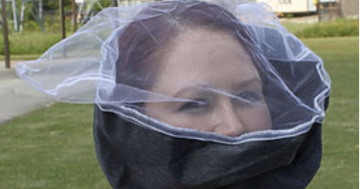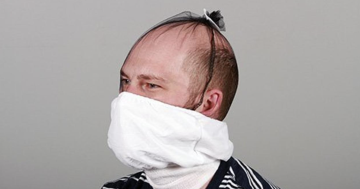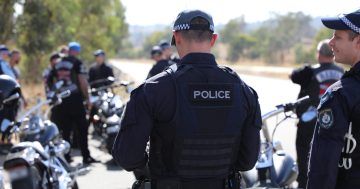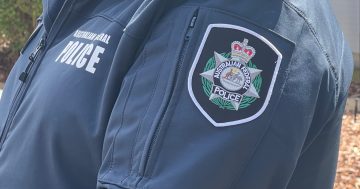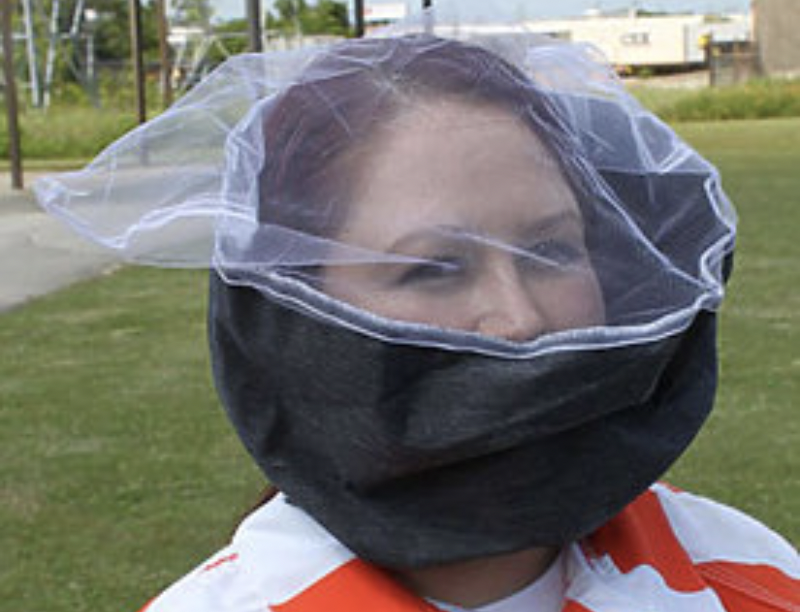
There have been calls for spit hoods to be banned after one was used on a 16-year-old girl who became violent. Photo: ICS Jail Supplies.
The image of a teenage Dylan Voller hooded and restrained in a chair shocked Australians when Four Corners investigated practices at Darwin’s infamous Don Dale Youth Detention Centre.
Voller was hooded because he had a habit of spitting at centre officers, something a surprising number of people employ against police officers.
It was revealed in estimates hearings last week that police officers had used a spit hood on a 16-year-old girl who became violent after refusing to give up her alcohol in the city.
Chief Police Officer Neil Gaughan told the hearing that in the 18 months between March 2020 and August 2021, 26 police officers reported being spat at or bitten in the course of their duties.
Offenders have also been known to bite the inside of their mouths so they can spit blood at the arresting officer.
CPO Gaughan said the devices were used ‘very seldomly’ and mostly in the Watch House, although he could not tell the hearing exactly how many times or if they had been used on children under 16.
If used incorrectly, the meshed hoods can lead to suffocation, but CPO Gaughan insisted they were safe.
But the ACT Greens, the ACT Human Rights Commission and First Nations advocacy group Change the Record want them to be banned and for alternatives such as face shields to be used instead, something police say is impractical.
Greens spokesperson for police Andrew Braddock, who called spit hoods dangerous and degrading, hopes to bring debate on a ban to the Legislative Assembly before the end of this year.
South Australia is the only Australian state to ban spit hoods. They were outlawed in 2021 following the death of Indigenous man Wayne ‘Fella’ Morrison in custody in 2016 after he had been restrained with one.

Chief Police Officer Neil Gaughan believes spit hoods are safe if used correctly. Photo: Michelle Kroll.
Voller’s extreme experience revolted many, but spit hoods remain a police tool to protect themselves, and officers have told Region of the trauma of being spat at by people carrying viruses such as Hepatitis C, the months of testing that followed to be declared clear of danger and the impact on family and relationships.
The COVID era has added one more virus for them to worry about.
The police union slammed calls for a ban and accused the Human Rights Commission (HRC) of helping politicise the issue.
“It is easy for them to criticise from the safety and comfort of their airconditioned offices – I would encourage the HRC executives to spend an entire week in a police car,” Australian Federal Police Association (AFPA) president Alex Caruana said.
“Go from job to job with [the police] and see how professional they are when they are dealing with their own safety and human rights being infringed on, while at the same time putting their bodies and lives on the line to keep the rest of the community safe.”
There is no doubt the ACT’s police have a tough job dealing with offenders, regardless of age or gender, who can be violent and willing to use their saliva or blood as a weapon against officers.
Repulsive as spit hoods may seem, police do have a right to protect themselves, and while face shields could be an alternative, there are obvious problems with obscured vision and saliva and blood still coming into contact with the body.
They also could be cumbersome to wear or make it harder and riskier for officers to restrain offenders who are in danger of harming themselves as much as the police.
The onus should be on offenders not to indulge in what is a disgusting and dangerous practice, although that is probably too much to expect.
Only properly trained police should be allowed to use spit hoods, they should only be used in specific circumstances, and more precise records should be kept of their deployment to ensure transparency.
As in all that goes in a detention setting, police need to be meticulous, as much as to protect themselves as well as ensure detainees are treated humanely.
It is very easy to criticise police but not so popular to give them the support they need to do their job to protect the public.
Until there is a safer and more practical alternative, police should continue to have spit hoods at their disposal.












